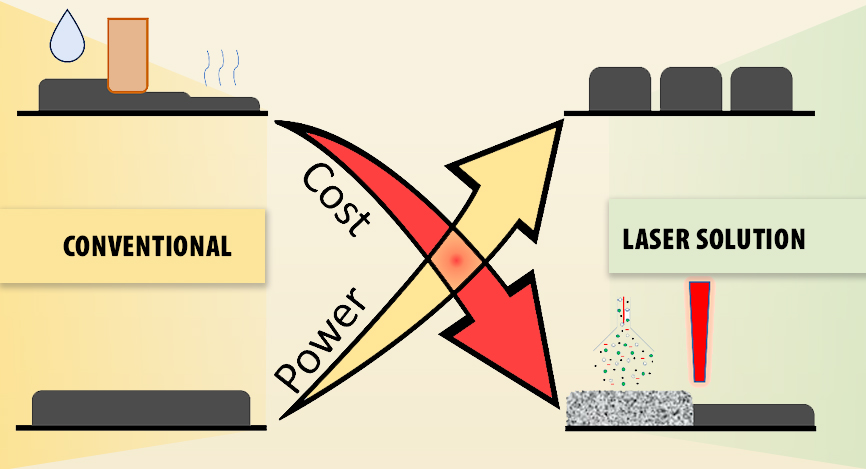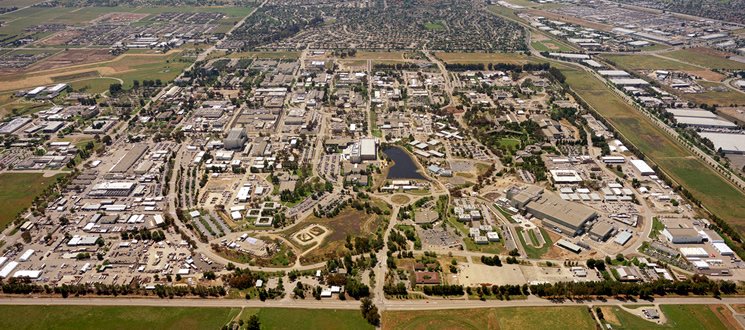Lawrence Livermore National Laboratory (LLNL) has partnered with battery material specialist Ampcera to develop the next generation of lithium battery cathodes using 3D printing technology.
The project is backed by $1.5 million from the Advanced Manufacturing Office at the U.S. Department of Energy, and will see the research partners leverage solvent-free Laser Powder Bed Fusion (LPBF) processes. The aim of the work is to create unique 3D battery structures capable of faster charging and higher energy densities, all while slashing manufacturing costs and lowering energy consumption.
“I applaud the Department of Energy for investing millions in innovative clean energy projects in California,” said U.S. Senator Alex Padilla. “Meeting our emissions goals and combating the climate crisis will require a concerted effort to develop new technologies — including better lithium-ion batteries. The research of today will allow us to create a strong, clean energy economy for years to come.”

The need for high-performance batteries
Some industry experts like Aaron Bent, CEO of materials provider 6K, estimate that the lithium-ion battery market will grow tenfold in the next decade. With the rise of the EV sector, as well as telecom backup, data centers, and power plants, there’s a need for tomorrow’s lithium-ion batteries to offer higher energy and power densities at lower costs.
According to LLNL, today’s widely used battery manufacturing techniques, which are based on slurry casting and coating, are struggling to advance the aforementioned metrics. These approaches utilize energy-intensive processes, as well as rely on dangerous solvents as raw materials for electrodes.
Additionally, they’re based on specialized production lines that can only manufacture one type of battery at a time, meaning there’s no design flexibility when it comes to battery geometry.
The 3D printing approach
The team led by Jianchao Ye, lead principal investigator of the project, is now looking to use LPBF to thermally fuse cathode powder mixtures onto aluminum current collectors in a bid to create custom high-performance battery structures. Owing to its expertise in solid-state electrolytes and electrode materials, Ampcera will be providing the cathode powders while LLNL will carry out the 3D printing operations.
LLNL claims that by eliminating the use of solvents for the cathodes, it can enable high-volume battery manufacturing with improved productivity. The additive method is also expected to lower overall energy consumption and costs, and boost energy densities.
Ye adds, “The environmentally benign process allows for thick high-capacity 3D cathode structures to be processed, enabling lithium-ion batteries to reach the fast-charging goal of 80% charge in 15 minutes or less.”
Moving forward, both organizations will continue to work closely to 3D print battery cells before evaluating their performance in the field.
Hui Du, co-founder and CTO of Ampcera, concludes, “The partnership between LLNL and Ampcera will accelerate the development and commercialization of the ultra-fast and low-cost L-PBF additive manufacturing technology for high-performance lithium battery manufacturing. After developing 3D-structured cathodes, we expect to expand the technology to anode design and also further explore its application in all-solid-state Li metal batteries with even higher energy and power densities.”

The 3D printing of energy storage devices is very much a niche field, but there are companies working to commercialize the technology. Earlier this year, Blackstone Resources, a Swiss investment firm focused on battery technology, announced that it expects to begin commercializing a new 3D printed sodium-ion battery design as early as 2025. The firm’s own German R&D subsidiary, Blackstone Technology, will work with a consortium of academic and industrial partners to demonstrate its 3D printed solid-state batteries in a real-world use case within the next three years.
Elsewhere, battery 3D printing specialist Sakuu Corporation recently reached a new milestone in the development of its lithium metal battery, achieving a benchmark energy density of 800 Wh/L. According to the firm, the achievement is a significant step forwards on its roadmap to fully 3D printed solid-state batteries capable of greater than 1,200 Wh/L by 2023.
Subscribe to the 3D Printing Industry newsletter for the latest news in additive manufacturing. You can also stay connected by following us on Twitter, liking us on Facebook, and tuning into the 3D Printing Industry YouTube Channel.
Looking for a career in additive manufacturing? Visit 3D Printing Jobs for a selection of roles in the industry.
Featured image shows Lawrence Livermore National Laboratory. Photo via US DoE.



